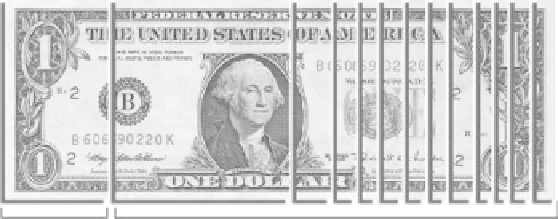Agriculture Reference
In-Depth Information
different demands than a floating sundries distributor in Vietnam's Ke Sat River. The
global food-marketing system must meet the needs of both. Thus, food marketing is
as important as food production to ensure food affordability. Similar to food produc-
tion, a simple equation can help explain relevant food-marketing issues:
Profits of the Food Marketing System = (Quantity Sold × Unit Price) − Cost (23.2)
This equation indicates that the performance of the food-marketing system depends
on the price that consumers are willing to pay for food, the costs of bringing food
from production to consumption sites, and the quantity demanded. This section
focuses on trends and issues regarding the first two items, while the next section
explores the last. There are two primary ways in which a private food-marketing sys-
tem can improve its performance. The supply chain can add value to the product for
consumers who are willing to pay higher prices, or it can reduce the costs incurred
in the transport, storage, processing, and distribution of food. Global food supply
chains continually review prices along the chain and the costs of bringing food from
the farm gate to the consumer's table. We consider these two issues in turn.
f
o o D
P
r i C e s
a n D
v
a L u e
-a
D D e D
a
C t i v i t i e s
Some consumers are willing and are able to pay for higher food prices. Consider,
for example the desire of time-starved consumers in the United States for such con-
venience foods as precut salads, ready-to-eat entrees, and meals away from home.
The U.S. Department of Agriculture (USDA) tracks annually the costs of processing
and distributing food or the “marketing bill,” which is calculated as the difference
between what consumers spend on food each year and what farmers were paid.
Consider the 2002 marketing bill (Figure 23.2). In that year, total U.S. consumer
spending on food produced, processed, and distributed domestically totaled roughly
$700 billion. In that year, only 19 cents of every dollar spent went to the farmer,
while the rest (81 cents) covered the cost of transforming products at the farm gate
into food products and getting them to supermarkets and restaurants (Elitzak, 2004).
Labor takes the biggest chunk of the food dollar
19¢
38.5¢
8.0¢
4.0¢
3.5¢
4.5¢
4.0¢ 3.5¢
4.5¢ 2.5¢1.5¢ 3.5¢ 3.0¢
Farm value
Marketing bill
fIguRe 23.2
The 2002 marketing bill. (From H. Elitzak, 2004,
Amber Waves
2:43.)

